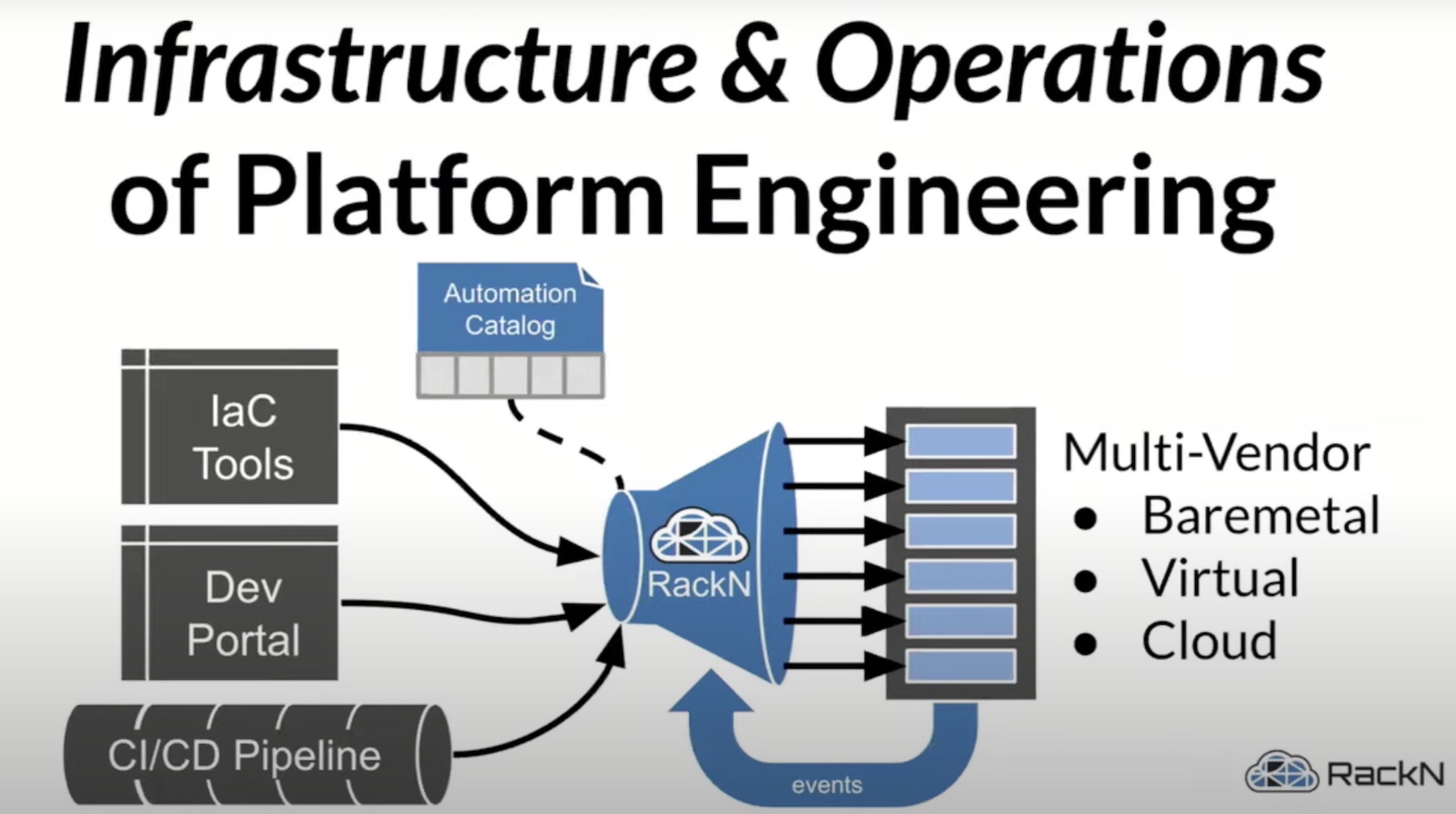In IT, infrastructure is everything. It is the foundation on which all processes and systems run. At its core, infrastructure is an amalgam of resources – compute, storage, analytics, toolchains and other functionalities – residing within heterogenous systems. These resources need to be connected and bonded to be able to manage the complex base layer functions of the infrastructure.
While in public cloud, provisioned infrastructure and cloud-native services make this integration less of a headache, inside private cloud datacenters, forging links between disparate components entails complex engineering that has been the full-time job of in-house teams for years.
Managing Infrastructure Via Code
Infrastructure as Code (IaC) has revolutionized the way infrastructure is managed. A DevOps approach, it aims to simplify provisioning and management of infrastructure. IaC provides ready-to-use templates and modular workflows that can be implemented the same way as software source code.
RackN Digital Rebar is an infrastructure platform that allows organizations to leverage and scale IaC automation, providing them an uncomplicated way to setup and manage infrastructure reliably, in a repeatable and transparent manner, and get the best out of developer platforms. The result is a self-service infrastructure that is supremely easy to manage and maintain.
“Platform engineering is a very big buzzword. People are excited about it,” commented Rob Hirschfeld, CEO, Co-Founder, at the recent Cloud Field Day event that hosted in Boston. “As much as we’re helping developers, what RackN does is really look at how the operations side of that equation is set. We think it’s a very important discussion,” he added.
Developers have been on a streak of collecting every right tool for the job for decades. This has led to the inevitable tool sprawl leaving the operations teams struggling to integrate them. It’s a daunting exercise interfacing endless stand-alone tools and resources with the infrastructure.
“You don’t want the Ops teams to have to chase each one of those bespoke components in a special way, to interface with the infrastructure. That’s really what we’re talking about – being able to have a consistent operational experience that you can then build on and not get in the way of the teams,” commented Hirschfeld.
RackN provides an undemanding, standard way to connect these siloed resources and eliminate divisions in the infrastructure.
Deploying new hardware systems manually is a multi-step process that includes several rounds of configuration, testing, firmware patches, etc. This often leads to systems spending months on end on the datacenter floor before they are up and running.
With Digital Rebar, operators can avoid deployment delays. It provides zero-touch discovery and swift onboarding with built-in discovery workflows, and immutable configuration packages, which bring down the onboarding time from 6 months to an hour.
RackN’s Digital Rebar provides standard automation to use across infrastructures, unlocking configuration consistency, thus helping sidestep risks of configuration drift and manual error. Automation of day-to-day tasks like workload provisioning and new versions upgrades, enables infrastructures to be managed largely on auto-pilot.
Same is promised for config changes and reset times – “We’ve now gotten the reset time down to a coffee break. So, if they have to tweak a configuration or change something, they can make that tweak, reset and then walk away. It’s transformative. Where it was six months or even days of work just to make a small change, now it’s literally a lunchtime type of action,” said Hirschfeld.
“Taking that journey from six months to one hour was very critical in a lot of ways giving them the availability of the platforms,” he added.
Reusable Automation
A library full of built-in composable workflows and pipelines helps Digital Rebar’s users build automation chains to easily manage separate vendor clusters, from the initial booting to lifecycle management. The pre-built automation blocks and modular integrations makes it super-simple to integrate components with code in bare-metal and full-stack infrastructures, be it in the cloud or at the edge.
The automation workflows are universal, fully reusable, and run across the infrastructure, irrespective of the vendors.

Having that reusability benefits a wide userbase. “It’s worth noting that the automation can be done in a repeatable, generic way. “ He explained, “The reusability of the systems means that when we fix automation for one customer, improve the integration between a vendor and production, we actually have that benefit for everybody. So the OEMs can make their systems available faster to everybody in market and turn things over more quickly.”
This is a welcome change from automations with short lives that outlive their usability within a short span of time. Hirschfeld pointed out, “If your automation half life is short, then people are going to be constantly tweaking, tuning, revisiting and literally just not relying on the system to do its job.”
Managing a Multi-Vendor Environment
But given the heterogeneity and dynamism of lower environments, how does RackN keep up with the demands?
The way most companies dodge the pressures of managing a diverse infrastructure is by sticking to any one vendor, and trying to homogenize the environment. RackN takes a radically different approach. From get go, its architecture is built to handle a diverse environment.
“We deal with any new piece of infrastructure by already having the architecture in place to deal with the fact that they’re not all the same. We spend a lot of time making sure that there are very safe paths through the product, and accommodate the variations, detect, adjust and adapt to it,” Hirschfeld said.
For more on Digital Rebar, check out RackN’s deep-dive presentations and demos from the recent Cloud Field Day event at the Tech Field Day website.

